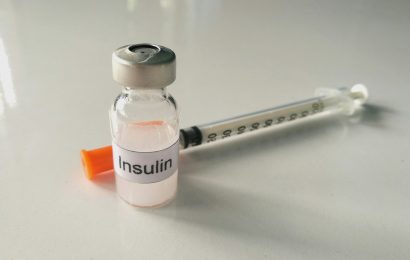Summertime is right around the corner, and for many people, that means road trips to favorite destinations. For some, travel is a part of work, as well. Whatever your reason for jumping into the car (or train, plane, or boat), make sure you’re prepared so that you stay healthy and your blood sugars remain in a safe range as much as possible.
Plan, plan, and plan again
Oh, to be carefree and take off whenever the mood strikes…as tempting as that can be, it’s best to have a game plan, whether your road trip will last for several hours or several weeks. Planning is a key part of managing diabetes, and the more you get into the habit of doing so, the less you’ll need to worry about possible pitfalls, such as low blood sugars, spoiled insulin, or painful blisters on your feet. While you map out your route, take the time to also map out your strategy for keeping your diabetes as well managed as possible.
Wear or carry identification. It’s always wise to wear medical identification jewelry, such as a bracelet or necklace. You can also carry an ID card in your wallet. If you’re thinking about getting a medical tattoo, make sure the tattoo is readable and visible. Also note that your blood sugar should be in control before getting any kind of tattoo to lower the risk of infection and to speed along the healing process.
Brush up on a few key phrases and know where to find medical help. If you’ll be traveling to a non-English speaking country, learn how to say some basics, such as “I have diabetes,” “I need some juice,” or “I need to get to a hospital.” Get a list of English-speaking doctors through the International Association for Medical Assistance to Travellers’ Medical Directory.
Bring a letter from your doctor. Ask your doctor for a letter that states that you have diabetes, that lists the medications that you take, and that states you need to carry insulin vials and syringes or insulin pens, your meter, test strips, and any other supplies you use. This is especially important if you are flying. Also, bring your labeled prescription medicines.
Do some research. Along with checking out the local attractions, check out your health plan and find out what they cover if you’re out of state or out of the country. Consider whether you want to purchase travel insurance that can cover you should you need to be medically evacuated in case of an emergency. And while you’re at it, find out where the local hospitals and pharmacies are located.
Get up to date with your vaccines. If your trip takes you to exciting foreign lands, enjoy! But play it safe: Find out if you need certain vaccinations so that you’re protected against illnesses such as typhoid, hepatitis A or B, or malaria, for example. A great resource is the CDC’s Travelers’ Health site at wwwnc.cdc.gov/travel. Allow plenty of time to get your vaccinations, too — schedule an appointment with your doctor or a travel clinic far enough in advance of your trip.
Learn how to adjust. If you’ll be traveling across time zones, you’ll likely need to make some adjustments to your insulin regimen. Also, if you plan on being more physically active than usual and/or eating more than usual, you may need to tweak your insulin doses accordingly. Talk with your diabetes educator or doctor a month or two before your trip so that you understand how to dose your insulin accordingly.
Leave room for your diabetes supplies. Make sure you have more than enough of your diabetes supplies with you. That means you pack enough insulin and/or other injectables or pills, other medicines that you take, your meter, plenty of test strips, syringes, infusion sets (if you use a pump), treatment for low blood glucose, glucagon (if you take insulin), and extra batteries for your pump or CGM. Also, don’t forget to pack a first-aid kit, as well. Don’t assume that you can easily get supplies, no matter where you’re going.
Pack some snacks. Don’t leave anything to chance, including the availability of food. If you’re at risk for low blood sugars, always carry a form of treatment with you. Glucose tablets and gels travel well, but other options include juice boxes, jelly beans, and raisins. Bring along healthful snacks that travel well, too, such as granola or energy bars, crackers and peanut butter, trail mix, and fruit. If you’ll be traveling in the car, pack a small cooler with nourishing perishable foods, such as yogurt, cheese sticks, raw veggies, and hard-boiled eggs.
Keep your (supplies) cool. Here’s another good reason to bring a cooler — it will help to keep your insulin and other supplies cool. Never leave insulin, other injectables, or test strips in a hot car. Keep your insulin or other injectables in a special cooling pack, away from ice where they might freeze. You’ll find plenty of insulin coolers online; Medicool, Goldwheat, and FRIO are brands to check out.
Protect your feet. Chances are, you’ll be doing a lot of walking when you get to your destination. Make sure you have proper footwear with you, such as a good pair of walking shoes or sneakers (break new shoes in before your trip). Wear absorbent socks to help keep your feet dry. Never go barefoot, either. Check your feet every day for issues such as cuts, sores, redness, or warmth, and seek medical attention if you don’t notice an improvement after 24 hours. If you’ll be in the car for a long period of time, stop at rest stops along the way and get out and walk around for a bit to get your circulation going and prevent blood clots.
Being prepared for your summertime adventures will help ensure that you stay healthy and happy. Talk with your doctor or diabetes educator if you have any questions or concerns about traveling with diabetes.
Her husband’s exploration of veganism has Amy Mercer feeling like she doesn’t have to be so restricted when it comes to food and diabetes. Bookmark DiabetesSelfManagement.com and tune in tomorrow to read more.





